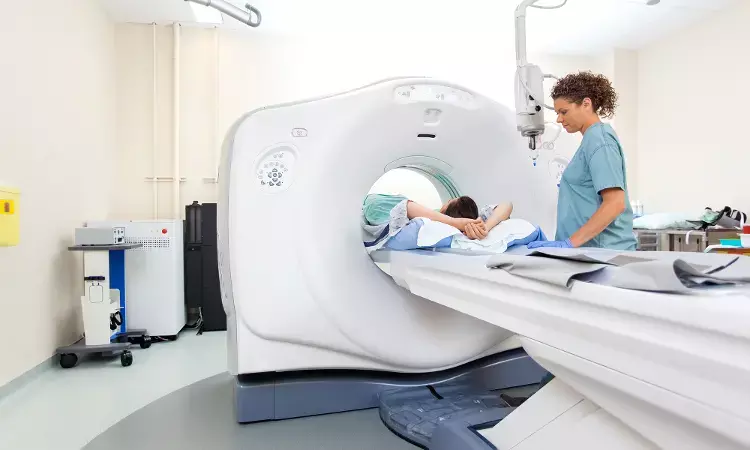- Home
- Medical news & Guidelines
- Anesthesiology
- Cardiology and CTVS
- Critical Care
- Dentistry
- Dermatology
- Diabetes and Endocrinology
- ENT
- Gastroenterology
- Medicine
- Nephrology
- Neurology
- Obstretics-Gynaecology
- Oncology
- Ophthalmology
- Orthopaedics
- Pediatrics-Neonatology
- Psychiatry
- Pulmonology
- Radiology
- Surgery
- Urology
- Laboratory Medicine
- Diet
- Nursing
- Paramedical
- Physiotherapy
- Health news
- Fact Check
- Bone Health Fact Check
- Brain Health Fact Check
- Cancer Related Fact Check
- Child Care Fact Check
- Dental and oral health fact check
- Diabetes and metabolic health fact check
- Diet and Nutrition Fact Check
- Eye and ENT Care Fact Check
- Fitness fact check
- Gut health fact check
- Heart health fact check
- Kidney health fact check
- Medical education fact check
- Men's health fact check
- Respiratory fact check
- Skin and hair care fact check
- Vaccine and Immunization fact check
- Women's health fact check
- AYUSH
- State News
- Andaman and Nicobar Islands
- Andhra Pradesh
- Arunachal Pradesh
- Assam
- Bihar
- Chandigarh
- Chattisgarh
- Dadra and Nagar Haveli
- Daman and Diu
- Delhi
- Goa
- Gujarat
- Haryana
- Himachal Pradesh
- Jammu & Kashmir
- Jharkhand
- Karnataka
- Kerala
- Ladakh
- Lakshadweep
- Madhya Pradesh
- Maharashtra
- Manipur
- Meghalaya
- Mizoram
- Nagaland
- Odisha
- Puducherry
- Punjab
- Rajasthan
- Sikkim
- Tamil Nadu
- Telangana
- Tripura
- Uttar Pradesh
- Uttrakhand
- West Bengal
- Medical Education
- Industry
Routine CT urography in microhematuria patients of limited value: JAMA

According to recent study findings, acknowledging the low diagnostic yield of CT urography and the associated risks and costs, limiting its use to high-risk patients older than 50 years has been warranted. Further,it was highlighted that risk stratification, as recommended by the recent American Urology Association guidelines on MH, may be a better approach to tailor further evaluation. Findings have been published in JAMA.
Microhematuria (MH) is a common finding that often leads to further evaluation for urinary tract cancers. There is ongoing debate about the extent to which patients with MH should be evaluated for cancer.
Researchers undertook the current study to assess the diagnostic yield for detection of urinary tract cancers, specifically bladder cancer, upper tract urothelial carcinoma (UTUC), and kidney cell carcinoma, among patients evaluated for MH using cystoscopy and computed tomographic (CT) urography.
Data Sources included MEDLINE, Scopus, and Embase were systematically searched for eligible studies published between January 1, 2009, and December 31, 2019. Original prospective and retrospective studies reporting the prevalence of cancer among patients evaluated for MH were eligible. Two authors independently screened the titles and abstracts to select studies that met the eligibility criteria and reached consensus about which studies to include. Among 5802 records identified, 5802 articles were screened using titles and abstracts. After exclusions, 55 full-text articles were assessed for eligibility, with 39 studies selected for systematic review.
The primary outcome was diagnostic yield, defined as the proportion of patients with a diagnosis of urinary tract cancer (bladder cancer, UTUC, or kidney cell carcinoma) after presentation with MH. Studies were stratified by the percentage of cystoscopy and CT urography use and by high-risk cohorts. The diagnostic yields of CT urography and cystoscopy were calculated for each cancer type.
Results highlighted the following facts.
- A total of 30 studies comprising 24 366 patients evaluated for MH were included in the meta-analysis. The pooled diagnostic yield among all patients was 2.00% (95% CI, 1.30%-3.09%) for bladder cancer, 0.02% (95% CI, 0.0%-0.15%) for UTUC, and 0.18% (95% CI, 0.09%-0.36%) for kidney cell carcinoma.
- Stratification of studies that used cystoscopy and/or CT urography for 95% or more of the cohort produced diagnostic yields of 2.74% (95% CI, 1.81%-4.12%) for bladder cancer, 0.09% (95% CI, 0.01%-0.75%) for UTUC, and 0.10% (95% CI, 0.04%-0.23%) for kidney cell carcinoma.
- In high-risk cohorts, the diagnostic yields increased to 4.61% (95% CI, 2.34%-8.90%) for bladder cancer and 0.45% (95% CI, 0.22%-0.95%) for UTUC.
Observing the results the research team concluded that, " The routine use of cystoscopy to evaluate all patients with MH also seems debatable. The use of an individual risk-stratified evaluation strategy based on personal risk factors, as recommended by recent AUA guidelines, may be a better approach to assess whether further evaluation is necessary among patients with MH."
For full article follow the link: doi:10.1001/jamanetworkopen.2021.8409
Primary source:JAMA
Dr Satabdi Saha (BDS, MDS) is a practicing pediatric dentist with a keen interest in new medical researches and updates. She has completed her BDS from North Bengal Dental College ,Darjeeling. Then she went on to secure an ALL INDIA NEET PG rank and completed her MDS from the first dental college in the country – Dr R. Ahmed Dental College and Hospital. She is currently attached to The Marwari Relief Society Hospital as a consultant along with private practice of 2 years. She has published scientific papers in national and international journals. Her strong passion of sharing knowledge with the medical fraternity has motivated her to be a part of Medical Dialogues.
Dr Kamal Kant Kohli-MBBS, DTCD- a chest specialist with more than 30 years of practice and a flair for writing clinical articles, Dr Kamal Kant Kohli joined Medical Dialogues as a Chief Editor of Medical News. Besides writing articles, as an editor, he proofreads and verifies all the medical content published on Medical Dialogues including those coming from journals, studies,medical conferences,guidelines etc. Email: drkohli@medicaldialogues.in. Contact no. 011-43720751


